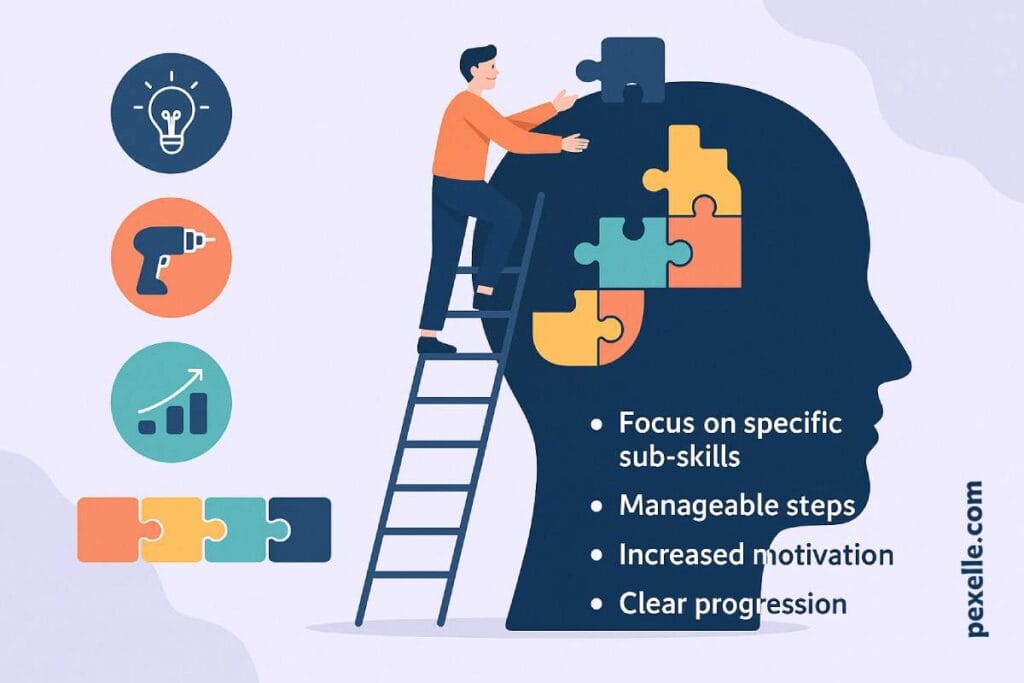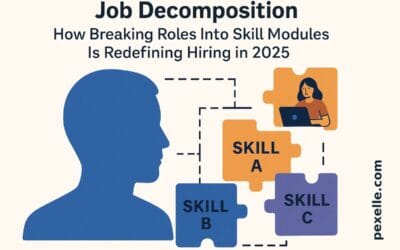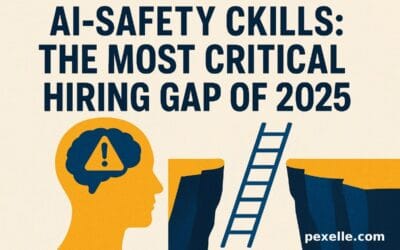The Advantages of Breaking Skills into Micro-Skills for Learning Path Design

Designing an effective learning path requires more than just identifying a broad skill and finding resources to master it. One of the most impactful strategies in modern education and professional development is breaking larger skills into micro-skills—small, specific, and actionable abilities that can be learned, practiced, and measured individually. This approach brings clarity, precision, and flexibility to the learning process, making it easier for learners to progress with confidence.
1. Increased Clarity and Focus
When a complex skill is broken down into micro-skills, each learning objective becomes more specific and easier to understand. Instead of facing an overwhelming goal like “become proficient in project management,” learners can tackle smaller, concrete abilities such as “create a Gantt chart,” “conduct a stakeholder meeting,” or “prioritize tasks using the MoSCoW method.” This specificity reduces ambiguity and helps learners see exactly what they need to achieve at each stage. It also aids instructors and training platforms in designing targeted content that aligns perfectly with these focused objectives.
2. Measurable Progress and Motivation
One of the main challenges in skill development is maintaining motivation over time. Large skills often take months or years to master, making it difficult for learners to feel a sense of progress. Micro-skills solve this by offering frequent, tangible milestones. Completing a micro-skill provides a sense of accomplishment, boosts confidence, and creates momentum. This is particularly effective in gamified learning environments, where each micro-skill mastered can be rewarded with points, badges, or certifications, reinforcing a learner’s commitment to the path.
3. Personalization of Learning Paths
Learners often come with varying levels of prior knowledge, strengths, and career goals. By dividing skills into micro-skills, training programs can customize learning paths to each individual. A learner who already excels in certain micro-skills can skip them, while focusing on areas where they need improvement. This adaptive approach not only saves time but also ensures that learning remains relevant and efficient, ultimately increasing retention rates and satisfaction with the training process.
4. Better Skill Transfer and Application
Micro-skills are typically practical, real-world actions rather than broad theoretical concepts. This makes it easier for learners to immediately apply what they’ve learned in their job or daily life. For example, instead of just understanding “data analysis,” a learner might practice “cleaning data using Excel functions” or “creating a pivot table.” These concrete competencies are easier to integrate into work tasks, ensuring faster skill transfer from the learning environment to real-world scenarios.
5. Continuous Improvement and Scalability
In fast-changing industries, the ability to update learning content quickly is critical. Micro-skill–based structures make this easier. If a tool, method, or industry standard changes, only the affected micro-skill module needs to be updated—rather than reworking an entire course. This modularity also allows organizations to scale training programs across different roles, departments, or regions without having to reinvent the entire learning framework.
6. Data-Driven Insights for Learning Optimization
Breaking skills into micro-skills enables more precise tracking of learner performance. Platforms can collect granular data on which micro-skills learners struggle with, how long they take to complete each one, and where drop-offs occur. This data can be used to optimize course design, allocate resources more effectively, and predict future training needs. In workplace settings, it also supports better talent management by providing clear insights into employee competencies at a micro level.
✅ Conclusion:
Dividing skills into micro-skills transforms the learning path from a vague, intimidating journey into a series of achievable, measurable, and adaptable steps. It improves clarity, personalizes the experience, increases learner motivation, accelerates real-world application, and allows for data-driven improvements. For educators, trainers, and organizations designing learning paths, embracing micro-skills is not just a strategy—it’s a competitive advantage in an era where precision and adaptability are key to success.
Source : Medium.com




